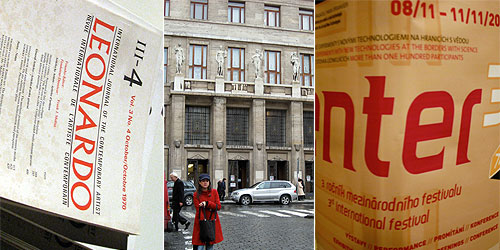
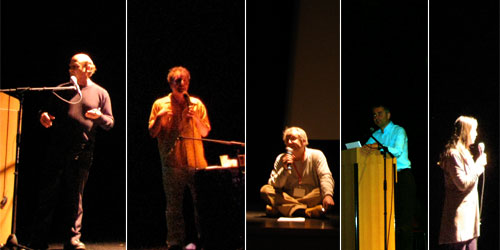
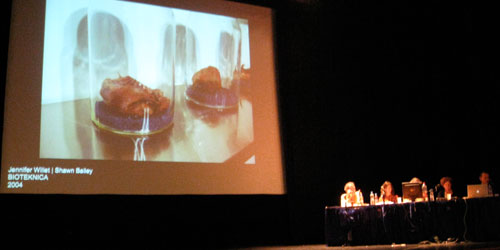
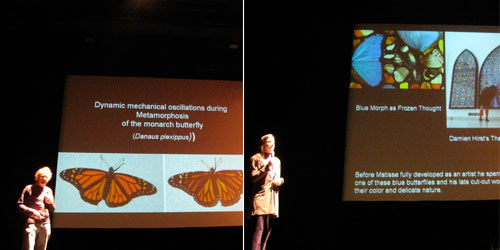
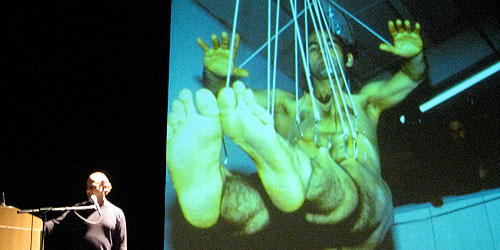
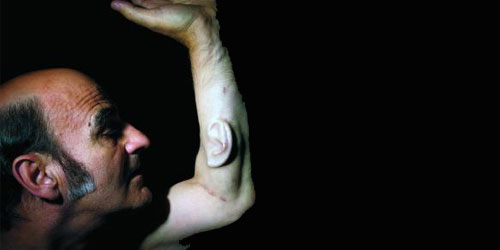
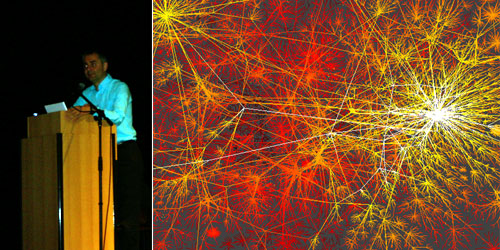

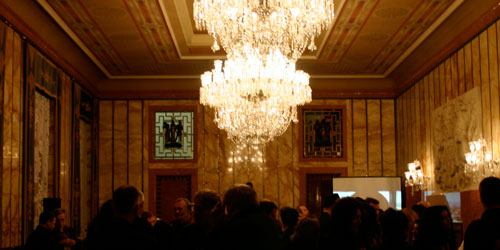
Explore the event day-by-day also at c-lab.blog by Laura Cinti and Howard Boland (authors of the images on this welcome page).









Explore the event day-by-day also at c-lab.blog by Laura Cinti and Howard Boland (authors of the images on this welcome page).
Taking Soundings places musical composition and sound art in a space of navigation and landscape. It suggests that technologies of navigation contribute to forming our relationship to the natural environment. Through the media of sound, moving image and space, the research contemplates the artistic implications of navigation through a technological position of motion, instability and noise. This empirical approach highlights the contrasts between a bodily experience of a physical environment and technologies of invisibility and intangibility. Sound, in the meeting of its physical and musical guises, is the primary catalyst.
As a composer I advocate that musical composition can benefit from stepping outside its own formal systems in order to investigate how sound can operate within the larger context of image and space. Beginning with the musical score, which does not contain sound but encodes potential interpretations by a performer within its notation, I use this interpretative gap between image and sound to drastically expand the idea of the score. Building on my other formal training in architecture and moving image, I initially looked into sound in relation to landscape and new technologies, then focused on navigation techniques. Much like a score, these presented spatial and temporal concepts with a direct physical relationship to the person navigating. It also created a discourse around the map, chart, trace and the various levels of notated or linear images in relation to the environment.In attempting to chart as carefully as I can an illusive area between sound, image and space as we actively make it, or physically compose it, I take on the complex influences of technologies.
Yolande Harris (UK1975) composer and media artist based in Amsterdam http://www.yolandeharris.net yolandeh@terra.es Yolande is working with sound, video and interactive technologies to create Score Spaces through performances and installations.
She studied music at Dartington College of Arts (BA), architecture and film at Cambridge University (MPhil). She has held residencies as Artistic Fellow Academy of Media Arts Cologne, Jan Van Eyck Academy Maastricht and STEIM Amsterdam. Yolande exhibits and performs her work at venues and festivals throughout Europe and Australia. She taught interaction design at the Technical University of Eindhoven, regularly presents her work at guest lectures, conferences and in journals.
By VÁCLAV CÍLEK
We are nostalgiac when we lose the phenomena we have fought with – open unknown seas, rainy forests, high plateaus or deep caves. We as the mankind we have grown through these fights and we have gradually becomed stronger than most of the sea storms, underground rivers and deep forests. Civilisations are evolving when they fight with nature and shrinking when they start to fight with themselves. The last wilderness that remains is climate. This relationship is far from being friendly or melancholic one. It is a threat of the magnitude of Pacific Ocean in 15th century. We know now that climate is stronger and does not care about consequences. What we should talk about are not only the real impacts of climate change but the archaic processes how we deal with wilderness – fears, awe, conflicts, reconciliations and finally protection. But we are at this moment at the very beginning of a deal with a new God of Climate Change.
Vaclav Cilek (*1955, Czech Republic)
Institute of Geology, Czech Academy of Science, senior geologist, e-amil: cilek(at)gli.cas.cz.
V. Cilek studied Mining Institute and Faculty of Natural Science of Charles University. Be became involved in study of hydrothermal deposits, later he studied samples brought from Moon by Russian satellites and then he focused some twenty years ago on climate change and environmental issues. He combines the knowledge of humanities with natural science. He is author of aprox. 400 scientific topics and several books including award winning „Inscapes and landscapes; Makom book of places“ .
By CLAUDE VALLÉE, http://cosmophone.in2p3.fr
THE INFINITELY SMALL, THE INFINITELY LARGE AND THE HIGH ENERGY DENSITY FRONTIER
Fundamental physics explores areas of nature which are more and more distant from common sense and usual representations of reality. In the past decades, high energy particle accelerators have revealed a new world of sub-atomic particles and forces which govern the behaviour of matter. These objects are described within the frame of quantum mechanics and Einstein relativity, which dilute the usual concepts of determinism, localisation, time and energy. It was recently recognised that the properties of sub-atomic particles are intimately related to the behaviour of the Universe in its very first moments. Within the Big Bang model, now corroborated by numerous observations, the energy density was so high in the first fraction of second that all kinds of sub-atomic particles existed together, forming a gas of matter, anti-matter and radiation interacting in the same way as they do in present high-energy accelerators or violent cosmic phenomena like quasars or super-novae. This conjunction of cosmology and particle physics is one of the most striking trends of present fundamental research.
Jacques Diennet, French, 1947
Composer, Artistic Director of the Music Company UBRIS STUDIO, ubris.studio(at)wanadoo.fr
Got familiar with digital composition during several stays in the USA and Canada, as Robert Ashley’s guest in the Mills College Studios and as John Appleton’s guest at the Darmouth College Studios. Laureate of several international prizes including: First Prize of the town of Varèse Competition Ruigi Russolo and First Prize of work for multimedia at the Bourges International Competitions in 2000.
Dr David Calvet, French, 1970
Researcher at the French National Centre for Scientific Research (CNRS),
Laboratoire de Physique Corpusculaire de Clermont-Ferrand, http://clrwww.in2p3.fr, calvet(at)in2p3.fr
Has participated to several High Energy Physics experiments at the European Centre for High Energy Physics (CERN, Geneva) and the Deutsches Elektronen Synchrotron (DESY, Hamburg). Has worked on several projects related to science popularisation, and designed the particle data acquisition of the Cosmophone. Laureate of the Communication Prize awarded in 2000 by the CNRS High Energy Physics Institute IN2P3.
Dr Richard Kronland, French, 1957
Researcher at the French National Centre for Scientific Research (CNRS), Head of the group “Modeling, Synthesis and Control of Sound and Musical Signals”, Laboratoire de Mécanique et d’Acoustique de Marseille, http://www.lma.cnrs-mrs.fr/, kronland(at)lma.cnrs-mrs.fr
Doctor in acoustics from the University of Aix-Marseille II (France), his primary research interests include analysis and synthesis of sounds with particular emphasis on musical sounds. Has participated to several artistic projects and coordinated the development of the sound synthesis framework of the Cosmophone.
Dr Claude Vallée, French, 1958
Researcher at the French National Centre for Scientific Research (CNRS), Centre de Physique des Particules de Marseille, currently Spokesman of the H1 Collaboration at the Deutsches Elektronen Synchrotron, Hamburg, http://marwww.in2p3.fr/, vallee(at)cppm.in2p3.fr
Former student of the Ecole polytechnique in Paris, he has participated to several High Energy Physics experiments at CERN and DESY and has initiated the development of the Cosmophone in 1998. Co-laureate with Richard Kronland of the “Prix Création de la Culture Scientifique” awarded in 1999 by the French Ministry of Research.
Thierry Voinier, French, 1953
Researcher at the French National Centre for Scientific Research (CNRS), Laboratoire de Mécanique et d’Acoustique de Marseille, http://www.lma.cnrs-mrs.fr/, voinier(at)lma.cnrs-mrs.fr
Expert in real-time sound synthesis techniques and algorithms, he was involved in many sound analysis and synthesis projects, developing several digital musical instruments and digital audio effects for composers. Designer of the moving source synthesis engine of the Cosmophone.
“Space Dance in the Tube” is an exhibition, a workshop, and a performance with a new communication based on the whole body to get an awareness about the familiar relationship between the body and the space.. Now we have 6 spaces for this project using by 6 tubes, “Space for Balance”, “Space for Darkness”, “Space for Light”, “Space for Play Tag”, “Space for Posture”, and “Space for Real & Virtual.” We think that this project is very useful for scientific education, communication, experience of art & science, new experience of rehabilitation, developing a health.
Yuichi Takayanagi, Director of Tama Science Museum, Ex-Commentator of NHK TV
Fukuhara Tetsuro, Japan, 07/06/1948
Director and Space Dance Choreographer of Tokyo Space Dance
http://www.ne.jp/asahi/tokyo/sd/
email: jv4t-fkhr(at)asahi-net.or.jp
By TAKURO OSAKA
“If I were to create art in space, it would be composed of light.” Souichi Noguchi, the Japanese astronaut, commented after the STS-114 mission to artists at a debriefing session held at Tokyo National University of Fine Arts & Music in October 2005. He stated that through his visual experience in outer space, he felt that light had an artistic
potential in space. The statement was a great inspiration for me as a creator of light art and as a professional who conducts studies on space and art, and gave me the opportunity to write this paper. (Mission Debriefing Session by Astronaut Noguchi, 2005)
In 2008, when the Japanese Experiment Module (JEM) “KIBO” will be docked to the ISS (International Space Station), the pilot mission for artistic experiments will begin. Prior to this mission, since 1996, JAXA (Japan Aerospace Exploration Agency) has been conducting research on the effective application of cultural-social sciences to JEM, and since 2000, has carried out experiments pursuing the theme “Potential of Art in Space”.
The artistic experiments in the space shuttle by astronauts Doi (STS-87 Mission, 1997) and Noguchi (STS-114 Mission, 2005) are from this project. The present paper will report on the artistic experiments that started in 2000 and introduce the designs of the art pilot mission to be launch in 2008, and discuss the potential of art in space.